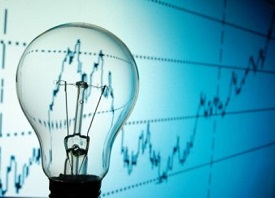 Following the acknowledgment of the increased supply costs reported by distribution companies to the Romanian Energy Regulatory Authority, as of October 1, 2017, the natural gas price for household consumers would be about 6% higher and the price of electricity by about five percent higher.
Following the acknowledgment of the increased supply costs reported by distribution companies to the Romanian Energy Regulatory Authority, as of October 1, 2017, the natural gas price for household consumers would be about 6% higher and the price of electricity by about five percent higher.
Given that the cumulative share of these energy products in the consumer basket used for calculating the consumer price index is close to ten percent, the effect will be a sharp increase of CPI by around 0.5%. And that, given the fact that the annual inflation rate communicated by INS for the interval between the beginning of the year and end of August was 0.52%.
*
- Energy source share in the consumer basket estimated price increase impact to CPI
- Electricity
- Natural gas
*
It should be noted that the group „Electricity, gas and central heating”, which also includes the thermal energy supplied to the population (where we are to see what decisions will be taken by local authorities on case-by-case basis regarding the subsidies for heat supplies under the already announced increases in tariffs of production), concentrates the largest average monthly expenditure of a household, namely 10.49%.
That is, well ahead of the „Meat, prepared and preserved meat” position (which contributes 8.52% to the CPI) in which prices have already started to move discreetly but systematically upwards and (beware of the international markets!), „fuels” position (share of 8.27%, only directly, without considering the influence on the other products transported).
Consequently, the current level of only 1.15% of the current inflation will go rapidly towards the theoretically optimal 2% level at a time when the consumption of energy products will also increase, which will lead to an even higher burden for the individual wallet during the winter.
For the stability of a household’s daily spending, it might be useful if we do not wait anymore for the arrival of the cold season to raise the energy prices if we still need to do that. And perhaps to leave some more time for consumers to find more favourable gas and electricity supply options in the liberalized market, before the consumption increases.










